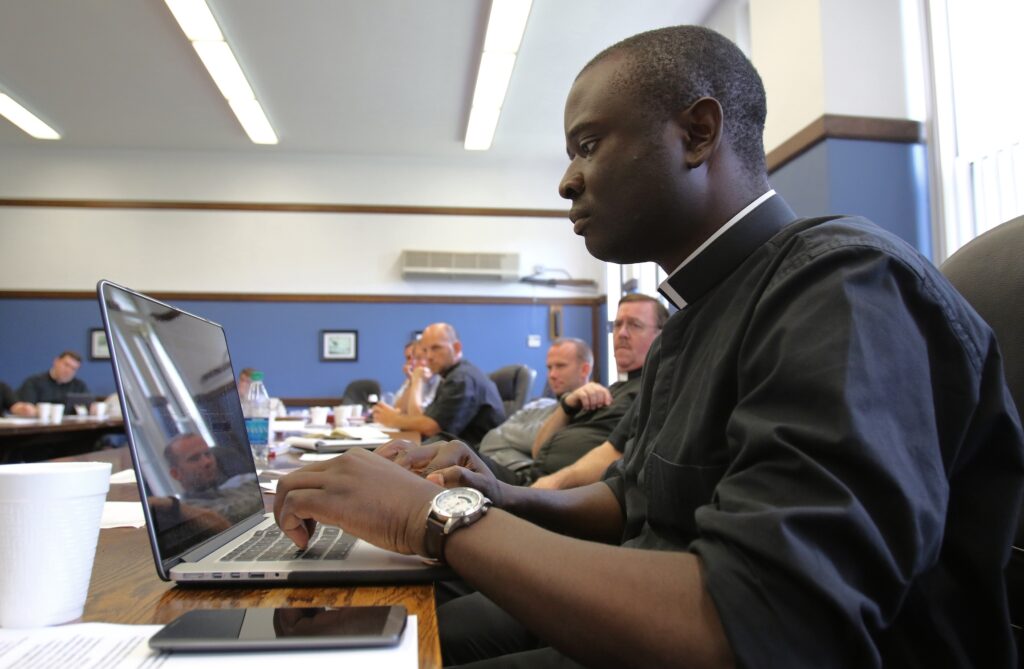
The Order of the Piarist Fathers, the Pious Schools, is the first religious order specifically dedicated to the education and evangelization of children and young people, especially the poor, from their earliest childhood. Its founder, St. Joseph Calasanz (1557-1648) chose as his motto “Piety and Literacy,” which in today’s language means comprehensive and integrated spiritual education, which is where the process of personal growth emanates until the “new man” emerges, who is Jesus Christ and the values that he bequeathed to us in the Gospel.
The Piarist Order began as a religious congregation in 1617. Later, in 1621, it obtained the rank of religious order. Therefore, it has already existed for more than 400 years of existence amidst the vicissitudes of history, in the midst of which good always triumphs over evil.
Today, the Piarists are still committed to the precept as stated by Jesus in the Gospel: “as you did to the least of these, you did unto me” (Matthew 25:40). It is a religious family whose geographical center of gravity has been moving to different parts of the world, counting about 1,400 clergy who are present in about 40 nations on four continents.
Since I am writing from the “new continent,” specifically in New York, it should be noted that the first Piarist presence in America was in Cuba, established on November 19, 1857. It was St. Anthony Mary Claret, founder of the Claretians, then bishop of Havana, who called them. From then until today, the Piarists have spread widely on this continent and we are in most nations of the Americas.
Among the first Piarists to arrive in Cuba from Spain was Saint Faustino Míguez, Sch.P., (1831-1925), a great scientist who also founded the Congregation of the Daughters of the Divine Shepherdess, the Calasanzian Sisters. Three years after his arrival in 1857, Saint Faustino Míguez returned to Spain, and died at the age of 94, living in an ascending Piarist spirituality.
I write this article no long after we celebrate the 165th anniversary of that glorious arrival of the Piarists to the American continent, an arrival that marked the founding of two schools in Guanabacoa, Cuba: the normal school for teacher training, and the annexed free school for elementary and practical education.
Subsequently, a creative process of expansion and consolidation followed, doing much good for many generations.
In the United States of America, the Piarists have been present in various places for about 75 years. At present, in the Archdiocese of New York, we carry out administrative and pastoral services at Annunciation Parish, West Manhattan, in the Hispanic neighborhood of Harlem, in the midst of a mostly Hispanic community. Here we serve the poor by providing pastoral care, spiritual guidance and social service, counseling, and food assistance. Obviously, as Piarists dedicated to the youth, we are always surrounded by children and young people whom we serve in catechesis and the Calasanz Movement. together with their parents.
We also have another presence, since 2015, in the parish of St. Helena in the Bronx. Here, fortunately, we have St. Helena Elementary School that we serve and with which we wish to have ever deeper educational ties; and Monsignor Scanlan High School, to which we also offer pastoral accompaniment service to students and their families. The population of this area is poorer and more multicultural, with Hispanics, Asians, and African Americans of different nationalities. In addition to our work similar to the one in Manhattan, we serve a French-speaking community composed of faithful of African origin, specifically from West Africa.
Given the circumstances in which Cuba finds itself, the Piarist presence there is very limited, but also very productive and significant. There we continue against the current, because we know that education-evangelization is the best gift we receive from the first steps of our life.
On March 16, 2022, young Pedro Luis Díaz Corrales began his novitiate year in Guanabacoa, accompanied in his formation by three Piarists from Spain and Mexico; in addition, Brother Iván Guerra Álvarez, Sch.P. is studying theology in Granada, Spain.
Since June 16, 2021, the Cuban Piarist presence has been integrated into the Piarist Province of USA and Puerto Rico, which in these years has been experiencing the grace of a vocational rebirth that rejoices the soul. They are usually young people from Puerto Rico and young Hispanics in general who came to the United States looking for the American dream and found God’s dream for them.
In all our communities of the Piarist Province of the USA and Puerto Rico, there are Piarists from different nations and continents since we represent 13 nationalities and four continents. Our youngest members, many of them already ordained priests, have been formed or continue their formation at St. Joseph’s Seminary in Yonkers, to whom we are immensely grateful.
Each November 27 we celebrate the feast of the so-called Patronage of St. Joseph Calasanz, remembering that in 1597, in the humble sacristy of the church of Santa Dorotea on the outskirts of Rome, St. Joseph Calasanz began the dream of integrating knowledge and wisdom with spiritual experience among the poorest.
As a tribute to Cuba, the cradle of the Pious Schools in the American continent, I will end with a synthesis of what we continue to do there today:
- Two cultural centers teaching English, music, solfège, painting, and school support;
- Parishes of St. Jude and St. Nicholas, with a church for public worship;
- Sanctuary and archconfraternity of Our Lady of the Sacred Heart of Jesus, Guanabacoa, whose image and dedication arrived for the first time with the Piarists in America;
- San José de Calasanz Kindergarten with two levels;
- Two Alcoholic Anonymous groups and one Narcotics Anonymous group;
- Two women’s groups: one to help vulnerable women, and another for elderly women;
- The Calasanz Movement at the service of children, adolescents and youth, and a group for the Calasanzian Spiritual Itinerary (ITEC);
- Psychological help to parents and children in Guanabacoa and San Judas parish. Emotional and food support to 36 elderly people in Centro Habana. Two “medicine banks” that help more than 60 people per month, free of charge;
- School for monitors. Vocational and faith guidance. Fr. Agustín Monfort’s Library;
- Spiritual and sacramental attention: weekly masses, baptisms (more than 700 in 2021), confirmations, and support to nearby parishes;
- Granjita Feliz “El Garabato”: an ecological project with children and young people with different disabilities and plastic arts.
Only the power of the Spirit is able to make the power of light, truth, beauty, and love triumph in the midst of so many external trials.


